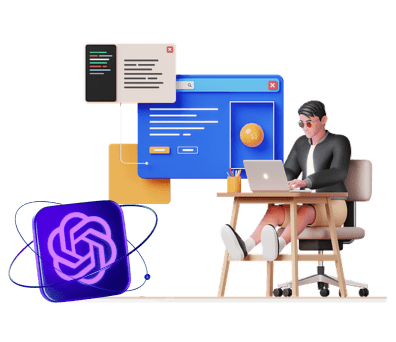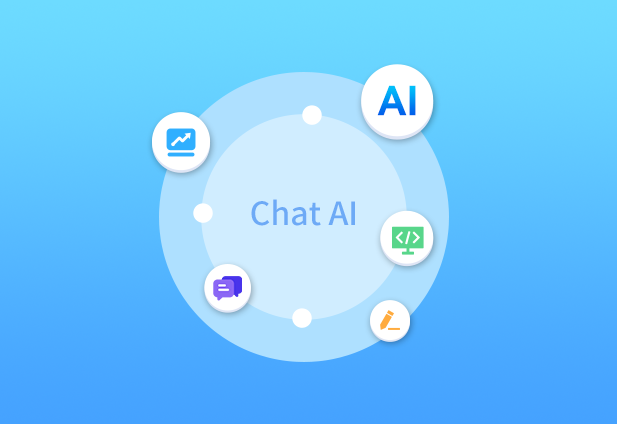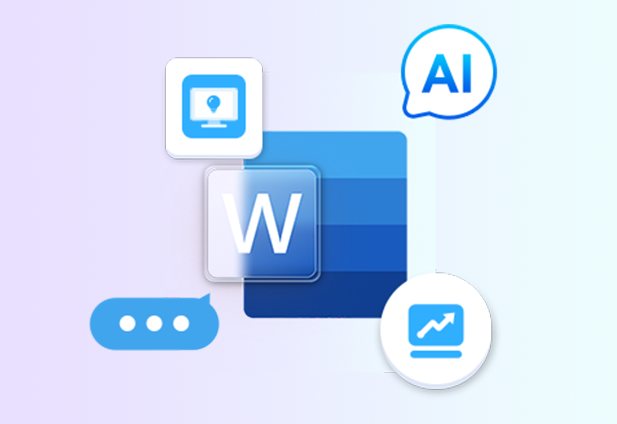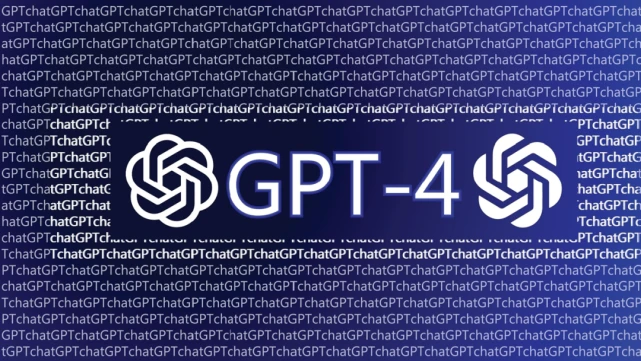
Minimum hardware requirements for deploying chatgpt locally
The GPT model is a powerful natural language generation model that can generate high-quality text replies. In order to make better use of this model, it is sometimes necessary to deploy ChatGPT to the local environment. Before conducting local deployment, it is necessary to understand the minimum hardware requirements for ChatGPT.
The training of the ChatGPT model requires a large amount of computing resources, but the local environment for running and deploying can choose relatively low hardware requirements. The following are the minimum hardware requirements required to deploy ChatGPT locally.
CPU is one of the necessary hardware for deploying ChatGPT. For small-scale deployments, such as individual projects or small businesses, a multi-core CPU with a higher frequency can meet the requirements. Common mainstream processors on desktops or laptops, such as the Intel Core i5 or AMD Ryzen 5 series, are usually capable of performing this task.
Memory is another necessary factor for deploying ChatGPT. In the inference process of the model, it is necessary to load data into memory and perform calculations in memory. For smaller models and low load usage scenarios, 8GB of memory may be sufficient. Considering the complexity and scalability of the model, it is recommended to choose 16GB of memory or above to ensure smooth performance.
Disk space is also a factor to pay attention to. The size of the ChatGPT model typically ranges from a few hundred MB to a few GB, so sufficient disk space is required to store the model and its related data. At least tens of GB of available disk space is required to accommodate the size of the model and future expansion needs.
To achieve better performance and speed, GPU can be considered to accelerate the deployment of ChatGPT. In terms of GPU, it is necessary to choose a graphics card that is compatible with CUDA and cuDNN. NVIDIA graphics cards, such as the GTX series or RTX series, are common choices. The memory size of the GPU is also a factor to consider, as larger memory can handle larger models and datasets.
In order to run ChatGPT in a local environment, relevant software and libraries need to be installed. This includes the Python environment, PyTorch, Hugging Face Transformers library, and more. Ensure that these software and libraries are the latest versions to ensure compatibility with the ChatGPT model.
When deploying ChatGPT locally, the minimum hardware requirements include a multi-core CPU with a high main frequency, 16GB of memory, dozens of GB of available disk space, and a GPU compatible with CUDA and cuDNN. These hardware requirements can meet small-scale deployment requirements, but for larger projects, larger hardware configurations may be required.
By meeting these minimum hardware requirements, we can deploy ChatGPT in a local environment and generate natural language text replies in an efficient and fluent manner. We can better control and customize ChatGPT applications to meet the needs of individuals or businesses.
-
1
Chatgpt deployment local

ChatGPT is an artificial intelligence based dialogue generation model launched by OpenAI, which can generate natural and logical dialogue content. Compared to traditional chat robots, ChatGPT can better understand the context and provide more accurate responses. This article will introduce how to deploy ChatGPT to a local environment. To deploy ChatGPT, we need to prepare the following steps. NN1. Ensure that the local environment meets the requirements: The deployment of ChatGPT requires a computer with good performance, and ensure that the Python runtime environment and related dependency libraries are installed. Nn2. Download the source code of ChatGPT: OpenAI provides the open source code of ChatGPT on GitHub, and we need to download the code file and save it locally. Nn3. Obtain model weight file: ChatGPT's model weight file can be downloaded from the link provided by OpenAI. These weight files contain trained model parameters for generating reply content. NN4. Configure runtime environment: Configure the relevant runtime environment in the local environment, including specifying Python versions, dependent libraries, etc. After completing the above steps, we can start deploying ChatGPT. NN enters the directory where the source code of ChatGPT is located through the command line. Run the ChatGPT startup script using the command line, specifying the relevant parameters. These parameters include the path of the model weight file, the input dialogue content, and so on. After running the script, ChatGPT will load the weight file and generate a response based on the input conversation content. We need to achieve dialogue and interaction between users and ChatGPT through a network interface. You can choose to use web frameworks such as Flask to create a simple web application that receives user input through a front-end page and sends it to ChatGPT. After ChatGPT generates a reply, the reply content is returned to the front-end page for display to the user. In order to improve the performance and user experience of ChatGPT, we can also make some optimizations. Load the model into memory to improve response speed, use caching mechanisms to avoid duplicate calculations, and use parallel computing to improve processing power. Deploying ChatGPT to the local environment requires preparation work, including preparing the environment, downloading source code, and obtaining model weight files. Run the startup script through the command line and achieve dialogue and interaction between the user and ChatGPT through a network interface. Optimize performance based on requirements to improve the response speed and user experience of ChatGPT. By deploying ChatGPT to the local environment, we can better control the process of dialogue generation and make customized adjustments according to specific needs. This provides greater flexibility and freedom for developers and researchers. Local deployment can also improve the speed and stability of dialogue generation, providing users with a better service experience.
-
2
Deploy chatgpt locally

OpenAI has released the latest generation of natural language processing model ChatGPT. This model uses deep learning technology to automatically generate human like dialogues, and has very strong language understanding and generation capabilities. In order to make ChatGPT more convenient to apply in practical scenarios, OpenAI also provides a method for deploying it locally. Deploying ChatGPT locally can bring many benefits. We can fully control the running environment of the model, including hardware devices and software configurations, to meet specific requirements. Local deployment can provide higher speed and low latency, as the inference process of the entire model occurs on the local machine without the need to transmit data over the network. Local deployment can also improve data security, as data does not need to leave the local machine. To deploy ChatGPT locally, we need to take the following steps. We need to obtain a pre trained model for ChatGPT. OpenAI provides multiple pre trained models, including versions of different scales and performance. We can choose the appropriate model according to our own needs. We need to download the weight file of the model and save it on the local machine. We need to set up the running environment for the model. ChatGPT uses deep learning frameworks such as TensorFlow or PyTorch, so we need to install the corresponding framework and other dependencies. We also need to ensure that the local machine has sufficient computing resources, such as CPU or GPU, to support the normal operation of the model. Once the environment is set up, we can load the weights of the pre trained model and start using ChatGPT for conversation generation. During the conversation, we can provide questions or prompts to the model and obtain the answers it generates. ChatGPT can understand the intention of the problem according to the context of the conversation and generate reasonable responses. If necessary, we can further improve the performance of the model by fine-tuning it to adapt to specific application scenarios. In order to better utilize ChatGPT, we can also integrate it into existing applications or systems. By using APIs or other integration methods, we can embed ChatGPT into our own software to achieve intelligent human-machine dialogue functions. This will provide users with a more natural and efficient interactive experience, enhancing the value and competitiveness of our applications. Deploying ChatGPT locally is a very meaningful action. It can enable us to fully utilize ChatGPT's powerful natural language processing capabilities and achieve more efficient, secure, and personalized human-machine dialogue in specific application scenarios. With the continuous development of deep learning technology and the continuous improvement of model performance, we believe that local deployment of ChatGPT will become simpler and more common.
-
3
Deploy chatgpt locally

Local deployment of ChatGPT: making AI assistants more secure and flexible. The development of artificial intelligence technology has made automated dialogue systems increasingly common. ChatGPT is a powerful dialogue generation model developed by OpenAI, which can be used in multiple application scenarios such as chat robots, customer service systems, and language translation. There are privacy protection and latency issues when deploying using cloud APIs. Fortunately, we can now deploy ChatGPT locally to improve security and flexibility. A key advantage of deploying ChatGPT locally is protecting user privacy. In many application scenarios, the conversation content of users may contain sensitive information, such as personal identification information, financial data, etc. By running ChatGPT locally, these privacy information will be better protected. Unlike uploading data to the cloud, deploying ChatGPT locally means that conversation data will always be stored locally without leaving the user's device. This localized privacy protection method can enable users to use AI assistants with greater confidence. Another advantage of nn is that deploying ChatGPT locally can improve response speed. Due to the fact that cloud deployment often requires transmitting data to remote servers and waiting for results to be returned, there may be some latency. Running ChatGPT locally can reduce this delay and provide faster response. This is particularly important for real-time dialogue systems as it can better meet user needs and provide a smooth interactive experience. Local deployment of ChatGPT requires some technical and computational resources support. We need a powerful hardware device, such as a high-performance server or personal computer, to undertake the computing tasks required to run ChatGPT. We need to install and configure relevant software environments, such as the Python programming language and related AI libraries. We need to download the model parameters of ChatGPT locally and configure the correct model path. After completing these preparations, we can interact with ChatGPT by building a simple user interface. Users can ask questions or requirements by entering text, and ChatGPT will parse them and generate corresponding answers. We can create a fully functional local AI assistant system. There are also some challenges in deploying ChatGPT locally. Due to the large size of the ChatGPT model, it requires a large amount of memory and computing resources to run. It may not be possible to achieve a smooth experience on devices with limited resources. Local deployment also requires a certain level of technical knowledge and experience. For ordinary users, it may be necessary to seek professional assistance to complete configuration and deployment. Local deployment of ChatGPT can provide better privacy protection and faster response speed. Although it requires some technical and computational resource support, it provides the possibility to build a secure and efficient AI assistant system. With the continuous development of artificial intelligence technology, we believe that local deployment of ChatGPT will play an important role in various fields and provide users with a better experience.
-
4
Requirements for deploying chatgpt to local configuration

ChatGPT is a language generation model of OpenAI that can generate natural and fluent conversations. Before deploying ChatGPT locally, there are some configuration requirements that need to be met. To deploy ChatGPT, you need a computer running ChatGPT. This computer should have high performance, including processors and memory. Although the exact configuration requirements may vary depending on the specific model size and requirements, it is generally recommended to use at least one computer with multiple CPU cores and a high main frequency to provide good performance and fast response time. To ensure the smooth deployment and operation of ChatGPT, you also need a reliable network connection. Due to the need for ChatGPT to communicate with OpenAI servers, it is necessary to ensure that your computer can stably connect to the internet. It is recommended to choose a fast, stable, and reliable connection to avoid delays or connection interruptions caused by network issues. In order to meet the configuration requirements of ChatGPT, you also need to install some dependencies and software packages. You need to install the Python programming language. ChatGPT uses Python for development and deployment, so it is necessary to ensure that the appropriate version of Python is installed on your computer. You also need to install some Python packages and libraries, such as TensorFlow or PyTorch, as well as other related tools that may be used for preprocessing data, loading models, and processing input and output. The specific dependencies and requirements will depend on the ChatGPT model and deployment method you choose. You can refer to official documents or relevant deployment guides for more detailed configuration and installation instructions. To ensure the safety and sustainability of ChatGPT, we suggest that you take some additional measures. You can use firewalls and security software to protect your computer from potential network attacks and malicious software threats. Regularly updating the operating system and software to obtain the latest security patches and functional improvements is also an important step in maintaining system security. Deploying ChatGPT locally requires meeting some configuration requirements. This includes a high-performance computer, reliable network connectivity, installation of appropriate dependencies and software packages, and additional security measures. To ensure the smooth operation of ChatGPT, you can also refer to official documents and guidelines for more detailed configuration and installation instructions. By meeting these requirements, you can deploy and enjoy ChatGPT's powerful language generation capabilities in a local environment.
Popular Services
More-
 AI customer service
AI customer serviceFully automated intelligent assistant, making services smarter and more efficient








